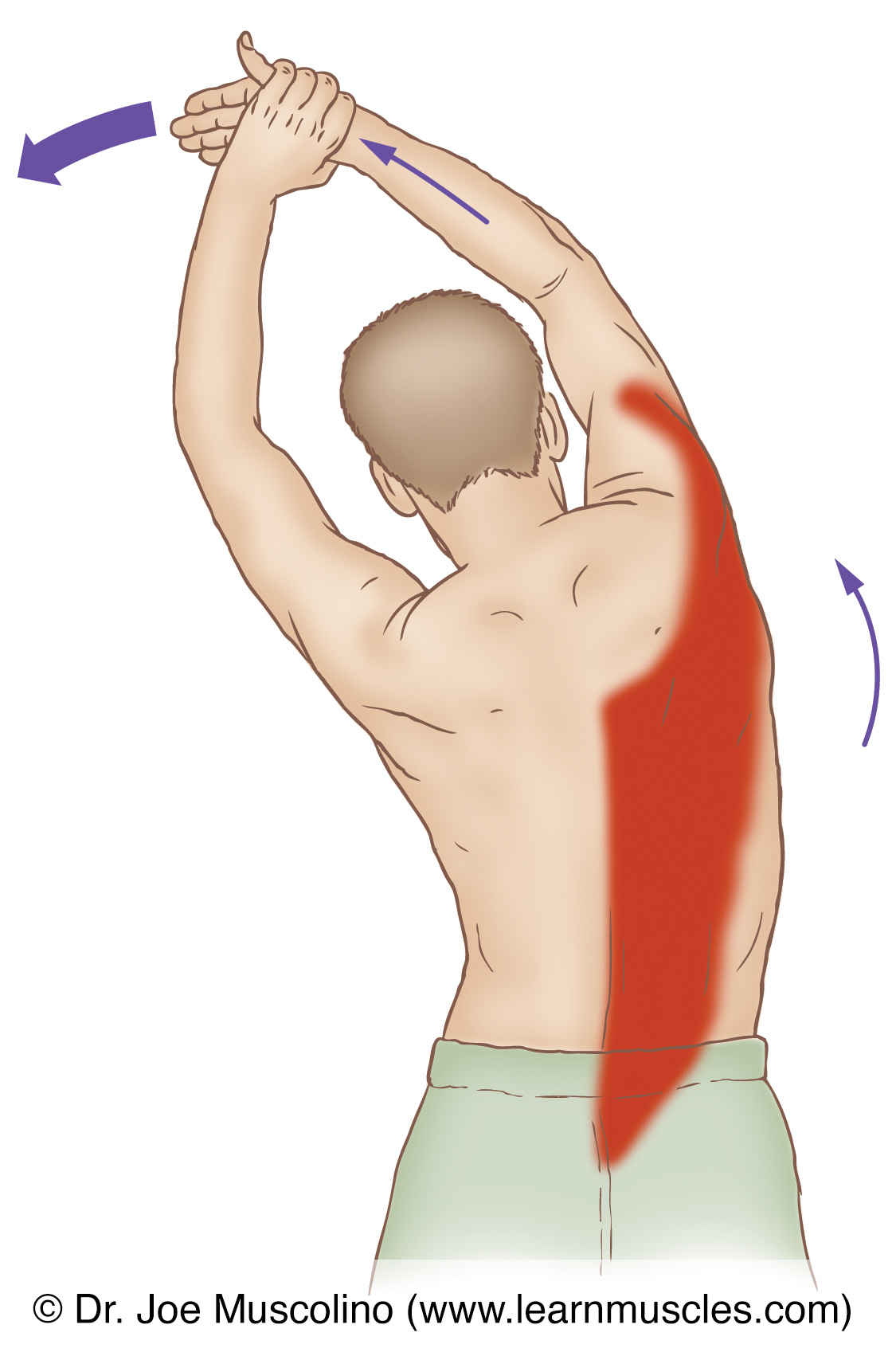The side arm stretch is a simple yet effective exercise that targets the muscles of the upper body, specifically the shoulders, arms, and sides. This stretching movement can help improve flexibility, relieve tension, and prevent injury in the upper body. In this comprehensive guide, we’ll explore the muscles elongated by the side arm stretch, provide step-by-step instructions for proper execution, offer variations to accommodate different fitness levels, and address common questions about this stretching exercise.
Muscles Elongated by the Side Arm Stretch
The side arm stretch primarily targets the following muscles:
Deltoids
The deltoid muscles, located on the shoulders, are responsible for raising and rotating the arms.
Trapezius
The trapezius muscles, which run from the base of the skull to the middle of the back, help stabilize and move the shoulder blades.
Latissimus Dorsi
The latissimus dorsi muscles, or “lats,” are large muscles of the back that assist in shoulder movement and stabilize the spine.
Rotator Cuff Muscles
The rotator cuff muscles, including the supraspinatus, infraspinatus, teres minor, and subscapularis, help stabilize the shoulder joint and facilitate arm movement.
Instructions for Performing the Side Arm Stretch
Follow these step-by-step instructions to perform the side arm stretch properly:
Stand Tall
Begin by standing tall with your feet hip-width apart and your arms relaxed at your sides.
Raise One Arm
Extend your right arm overhead, reaching towards the ceiling, with your palm facing inward.
Grasp Elbow
Bend your right elbow and reach behind your head with your left hand, gently grasping your right elbow.
Pull Elbow
Gently pull your right elbow towards your left side, feeling a stretch along the right side of your upper body.
Maintain Posture
Keep your torso upright and avoid leaning or twisting excessively as you perform the stretch.
Hold and Breathe
Hold the stretch for 15-30 seconds, breathing deeply and evenly throughout the movement.
Switch Sides
Release the stretch and repeat the sequence on the opposite side, extending your left arm overhead and grasping your left elbow with your right hand.
Tips for Proper Form
Avoid Shrugging
Keep your shoulders relaxed and away from your ears throughout the stretch to avoid tension in the neck and upper traps.
Engage Core
Engage your core muscles to maintain stability and support your spine as you perform the stretch.
Controlled Movement
Move slowly and gently into the stretch, avoiding any sudden or jerky movements that could cause strain or injury.
Adjust Intensity
Modify the intensity of the stretch by adjusting the position of your arm and the amount of pressure applied during the stretch.
Variations of the Side Arm Stretch
Seated Side Arm Stretch
Perform the stretch while seated on a chair or bench for added stability and support, particularly if standing is uncomfortable or challenging.
Wall Assisted Side Arm Stretch
Stand with one side facing a wall and place your hand against the wall at shoulder height. Gently lean into the wall to deepen the stretch along the side of your body.
Dynamic Arm Circles
Instead of holding the stretch statically, perform dynamic arm circles by moving your extended arm in small circles while maintaining a gentle pull with your opposite hand.
Frequently Asked Questions (FAQs)
How often should I perform the side arm stretch?
Aim to perform the side arm stretch at least 2-3 times per week, incorporating it into your regular stretching routine to improve flexibility and mobility in the upper body.
Can the side arm stretch help relieve shoulder pain?
Yes, the side arm stretch can help relieve tension and tightness in the shoulders, potentially reducing shoulder pain and discomfort over time.
Should I feel pain while performing the side arm stretch?
No, you should not feel pain while performing the side arm stretch. If you experience pain, ease off the stretch and adjust your position to reduce the intensity.
Is it better to perform the side arm stretch before or after exercise?
You can perform the side arm stretch both before and after exercise. Stretching before exercise can help prepare your muscles for activity, while stretching after exercise can aid in muscle recovery and flexibility.
Can I perform the side arm stretch if I have a shoulder injury?
If you have a shoulder injury or are experiencing shoulder pain, consult with a healthcare professional before performing the side arm stretch to ensure it is safe and appropriate for your condition.
How long should I hold the side arm stretch?
Aim to hold the side arm stretch for 15-30 seconds on each side, gradually increasing the duration as your flexibility improves over time.
Can I perform the side arm stretch as part of a yoga routine?
Yes, the side arm stretch can be incorporated into a yoga routine as a way to improve shoulder mobility and release tension in the upper body. It pairs well with other yoga poses and stretches that target the shoulders and arms.
Conclusion
The side arm stretch is a simple yet effective exercise for improving flexibility, relieving tension, and promoting mobility in the upper body. By targeting muscles such as the deltoids, trapezius, latissimus dorsi, and rotator cuff muscles, this stretching movement can help alleviate tightness and discomfort in the shoulders and arms. By following proper form and technique, incorporating variations to suit your needs, and listening to your body’s cues, you can safely and effectively incorporate the side arm stretch into your regular stretching routine. As always, if you have any concerns or underlying health conditions, consult with a healthcare professional or certified fitness trainer before starting a new stretching program.
- What Is The Smallest Amount Of Lip Filler - May 30, 2025
- Skin Pen Microneedling Near Dockenfield, Surrey - May 30, 2025
- Thc Infused Seltzers In South Carolina SC - May 29, 2025

